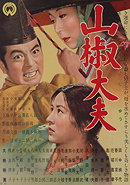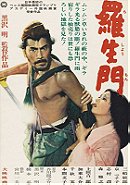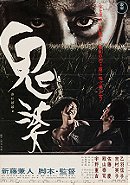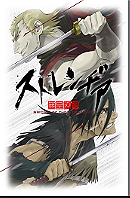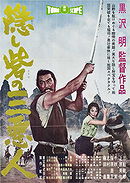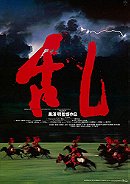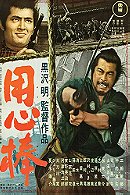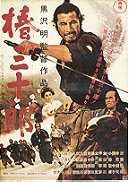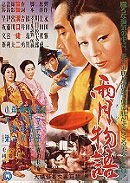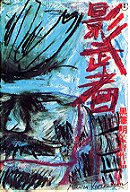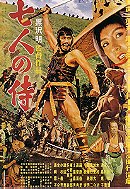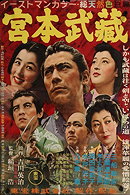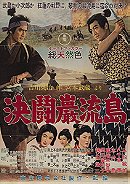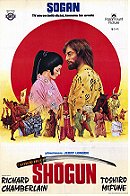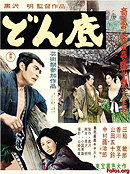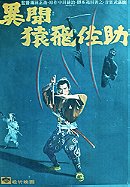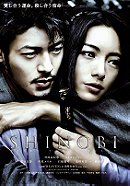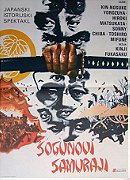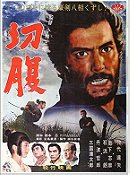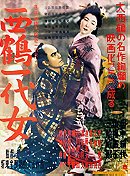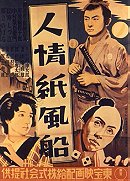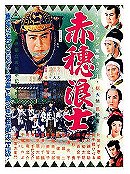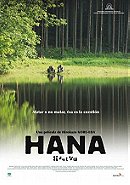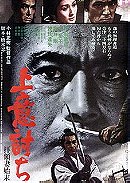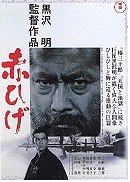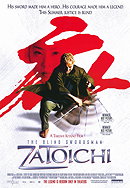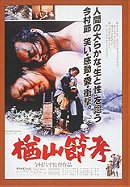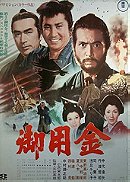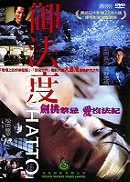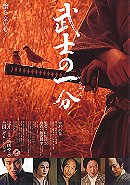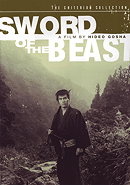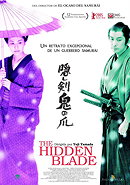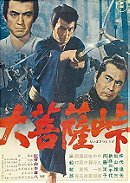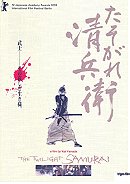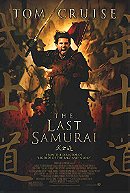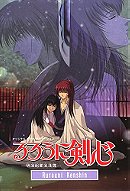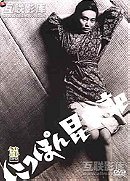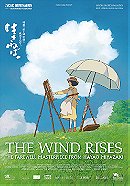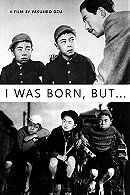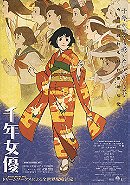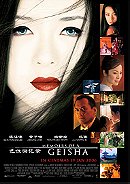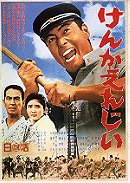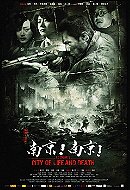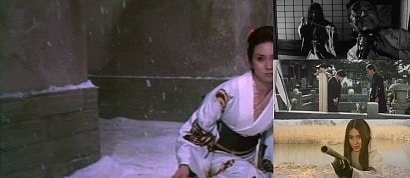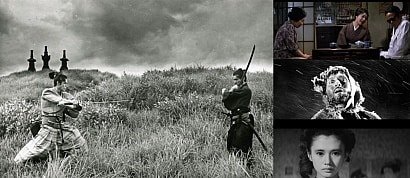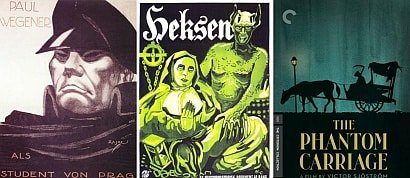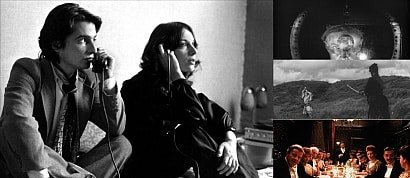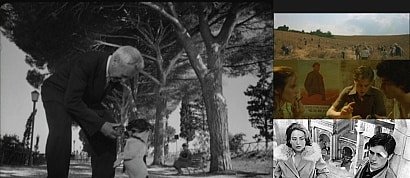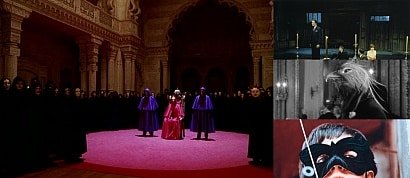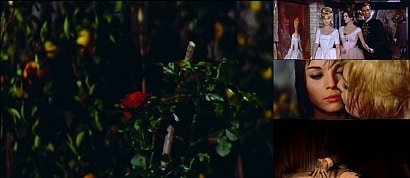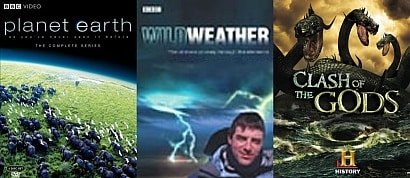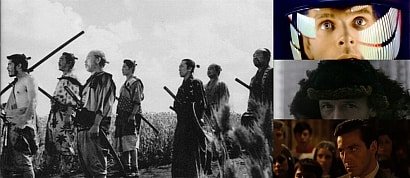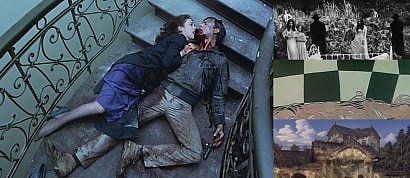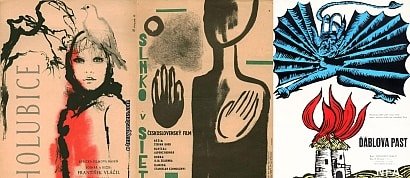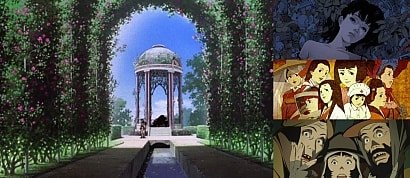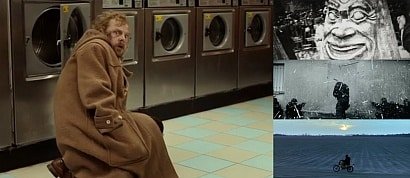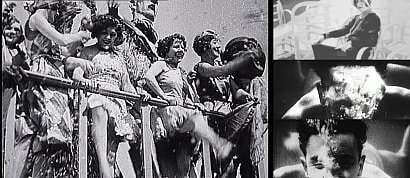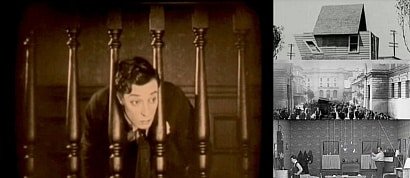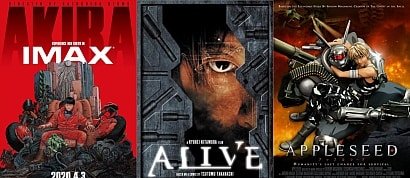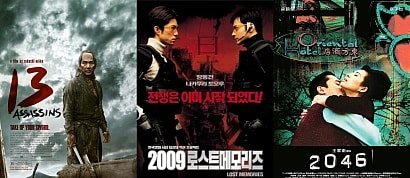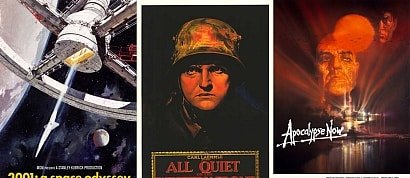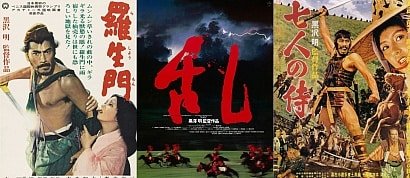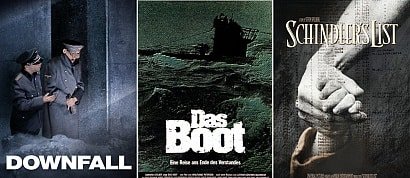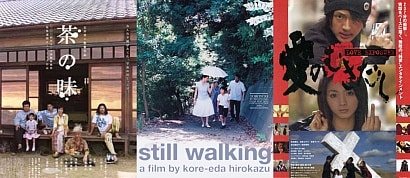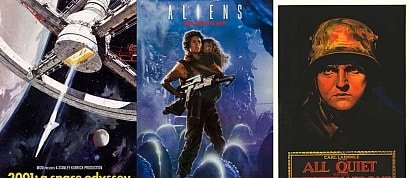Experience Japanese History Through Film
Sort by:
Showing 1-50 of 85
Decade:
Rating:
List Type:
Portrait of Hell (1969)
Circa 900, the Heian Era. Depicts life in early Japanese history with a focus on early Korean immigration to Japan and the hardships/racism faced by many Koreans in daily life.
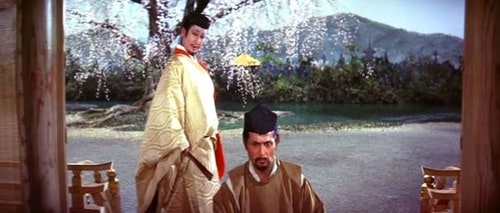

Dbcook's rating:


Rashomon (1950)
Circa 1180, the Heian Era. Implied to be set during the Genpei war, this movie depicts the destruction and human suffering of the time in a world that seems to be descending into chaos.


Dbcook's rating:


Onibaba (1964)
1336, the Kenmu Restoration. set during a traumatic civil war in 14th century Japan that raged for 50 years, Onibaba depicts the lengths commoners were willing to go to survive in an era of war, famine, disease and greed.


Dbcook's rating:


Sword of the Stranger (2007)
Circa 1500 - 1573, the Sengoku Warring States Period. Depicts life during one of the most violent periods of civil war in Japanese history.


Dbcook's rating:


The Hidden Fortress (1958)
Circa 1500 - 1573, the Sengoku Warring States Period. The Sengoku warring states period was an era of social upheaval and almost 100 years of constant civil war. It has been a popular historical source for Japanese Samurai film (jidaigeki).The Hidden Fortress is considered to be one of the primary influences for Star Wars.


Dbcook's rating:


Ran (1985)
Circa 1500 - 1573, the Sengoku Warring States Period. Ran is considered to be an exemplary film of the depiction of the true nature of the Sengoku period which pitted brother against brother in ruthless civil war and the chaos of the time.


Dbcook's rating:


Throne of Blood (1957) (1996)
Circa 1500 - 1573, the Sengoku Warring States Period. With civil war a constant fact of life, treachery, prevarication, and murder were almost daily occurrences during the Sengoku era all of which are depicted in Throne of Blood.


Dbcook's rating:


Yojimbo (1961)
Circa 1500 - 1573, the Sengoku Warring States Period. During the Sengoku period, as Daimyo fought each other to the death, numerous ronin, or master-less samurai began to appear across the land. Depicts the life of ronin and bandits in an era of social upheaval.


Dbcook's rating:


Sanjuro (1962)
Circa 1500 - 1573, the Sengoku Warring States Period. Sanjuro has many of the same elements featured in "Yojimbo" and there are many symbolic elements of the film related to the Sengoku era such as brutality, violence and death which are all taken for granted during this tumultuous period.


Dbcook's rating:


Circa 1568 - 1573, the Azuchi-Momoyama Era. Set at the end of the Sengoku era which saw the transition from almost a 100 years of civil war to a unified country at peace which would come to be known as the Edo period. Ugetsu is set at the pinnacle of the Sengoku civil war and depicts the peasant upheavals of the time as well as the universal greed that was so detrimental as to destroy the human soul.


Dbcook's rating:


Seven Samurai (1954)
1587, the Azuchi-Momoyama Era. Seven Samurai depicts the lives of peasants, bandits, and ronin during the end of the warring states period. Depictions of complete chaos and lawlessness effectively represent the impact of the civil war on the countryside. Towards the end, a omen of times changing indicates the eventual decline of the Samurai class as an era of peace and prosperity approaches and the Samurai become obsolete.


Dbcook's rating:


Samurai I: Musashi Miyamoto (1954)
Circa 1600 - 1612, the Edo Period. Depicts the life of real-life samurai legend and strategist Musashi Miyamoto who was prominent during the early Edo period. Depictions of the battle of Sekigahara.


Dbcook's rating:


Shogun (1980)
Circa 1600 - 1620, the Edo Period. Miniseries based on the real life historical character William Adams who would become the most influential foreigner in Japan during the Edo era and a key advisor to the shogun after shipwrecking off the shore of Japan.


The Lower Depths (1957) (1957)
Circa 1600's, the Edo Period. Depicts the status and everyday lives of commoners and peasants in the newly unified and peaceful Edo Japan.


Dbcook's rating:


Shinobi: Heart Under Blade (2005)
1614, the Edo Period. Insight and depictions into life under the ruler and founder of Edo Japan, Tokugawa Shogunate. Depictions of ninja's operating in 17th century Japan.


Dbcook's rating:


Shogun's Samurai (1978)
1624, the Edo Period. Depicts the lives of Samurai during the early Edo era and the coming era of seclusion and isolation.


Dbcook's rating:


The Life of Oharu (1952)
1686, the Edo Period. Based on the novel The Life of an Anomorous Woman, the film explores themes such as gender issues and the role of women in society during the floating world cultural movement. This period in Japanese history saw increased urbanization of the land and a growing cultural movement fueled by Japan's rapidly growing middle class


Humanity And Paper Balloons (1937)
Circa early 1700's, the Edo Period. Depicts life in the cramped slums of Edo (today Tokyo), which was at the time the largest city in the world with over 1 million people. Presents a harsh critique of the social and political conditions of the time.


Hana (2006)
Samurai Rebellion (1967)
1725, the Edo Period. Set during the height of the Edo Period in which the Tokugawa Shogunate has enforced an era of peace through absolute obedience to the shogun. Examines the morality and nobility of the fading Samurai caste in an era of peace.


Dbcook's rating:


Red Beard (1965)
Circa 1800's, the Edo Period. Examines the problems of social injustice during the late Edo Period. Depicts the lives of medical doctors during the Edo period.


Dbcook's rating:


The Ballad of Narayama (1983)
Goyôkin (1969)
1831, the Edo Period. Set towards the end of the Tokugawa Shogunate, this film takes place on Sado, and island off the west coast of Japan. Sado was a gold mining boom island during the Edo period and the Shogunate sent numerous exiles and prisoners to the island to toil in the gold mines. the name Goyokin means gold.


Dbcook's rating:


Taboo (1999)
1853, the Edo Period. Taboo is set at the very end of the Edo period on the same year that admiral Perry's "Black Ships" sailed into Tokyo Bay and Japan opened up to the west. This film explores the common practice of wakashudo in which a Samurai official would often take his young male apprentice as a lover.


Dbcook's rating:


Love and Honor (2006)
Circa 1850's, the Edo Period. Explores the harsh life of a blind samurai and the lengths he must go to retain his honor.


Dbcook's rating:


Circa 1860's, the Bakumatsu Civil War Era. An excellent illustration of the 1860's era in Japan and the rapid changes that were sweeping through Japan. Set in far Northwest Japan, this region was one of the last to fall to the rapid westernization of the country it depicts the lives of the Samurai at the end of their days.


Dbcook's rating:


The Sword of Doom (1966)
Circa 1860's, the Bakumatsu Civil War Era. Set during the onset of the Meiji era, this movie depicts the life of the samurai as it operates under close surveillance in a new limited-democracy.


Dbcook's rating:


1878, the Meiji Restoration Era. Fictional movie set 10 years after the Battle of Toba–Fushimi and the beginning of the Meiji Restoration Era. The movie follows former assassin Kenshin Himura who has vowed to never kill again. In 1878, Kenshin Himura finds himself tested to keep that vow as he is threatened by figures from his past. Background depictions of Japan's transition from a feudal society to an industrialized one.


Dbcook's rating:


The Last Samurai (2003)
1876-1877, the Meiji Restoration Era. Though this is an American film, it provides an excellent illustration of the Meiji Restoration and the infamous Samurai Satsuma Rebellion of 1877. Japan was in the midst of rapid change and modernization during the late 19th century and establishing itself as a major Asian power. This film depicts the lives of disgruntled Samurai at the end of their days in a world that no longer has a need for them.


Dbcook's rating:


Dbcook's rating:


Lady Snowblood (1973)
1874 - 1894, the Meiji Restoration Era. Look into the criminal underworld of Japan during the Meiji era.


The Insect Woman (1963)
1918 - 1949, the Taisho/Imperial Era. Set during the first half of the 20th century, this movie depicts rural poverty in Imperial Japan by focusing on the life of a young woman born into poverty and forced to work as a maid in a brothel.


The Wind Rises (2013)
1918 - 1949, the Taisho/Imperial Era. The Wind Rises follows the life of aeronautical engineer Jiro Horikoshi who designed the Mitsubishi A6M Zero of which 11,000 were made during the war. The film is about a complex personal and national past that director Miyazaki has long reflected on.


Dbcook's rating:


Dbcook's rating:


I Was Born, But... (1932)
1932, the Taisho/Imperial Era. "I Was Born, But..." is a period film set in 1932 Japan, the year the movie was filmed, and follows a lower middle class family in suburban Tokyo and includes insight into the rigid social hierarchy of the time.


Millennium Actress (2001)
1932-1972, the Taisho/Imperial Era through the Reconstruction Era. Depicts the life of a former actress as she reflects on her career and never ending search for a lost love. Depicts numerous decades of modern Japanese history as well as many historical eras as perceived by the main character through the making of her movies and acting career.


Dbcook's rating:


Circa 1930 - 1945, World War II Era. A fictional account of the life of a young woman sold as a geisha in early modern Japan. Geisha were female courtesan entertainers who were highly accomplished in the arts, music, singing, dancing, and sex on rare occasions (but almost always at the geisha's choosing). Up until the 1900's, prostitution was legal in Japan. During World War II, in which the film predominately takes place, there was a decline in the geisha arts as most geisha were forced to work long grueling hours in factories in order to make a living. The life of a geisha begins training at a very young age and takes a lifetime to perfect.


Dbcook's rating:


Fighting Elegy (1966)
1935, World War II Era. Fighting Elegy takes a cynical look at the Koha boys culture during the Imperial Japanese era. Young boys were often sent to martial military schools where they were conditioned to repress sexual desires and violence as a path towards Japanese manhood.


City of Life and Death (2009)
1937, World War II Era. City of Life and Death is set shortly after the start of the long and brutal eight year Second Sino-Japanese war between Japan and China in which over 20 million Chinese died. The movie is a gripping account of the rape of Nanking from the perspective of Japanese soldiers, Chinese soldiers and civilians, and the Westerners caught in the Chinese Nationalist capital at the time of its fall. With humiliating losses during the battle of Shanghai, the Japanese were looking for revenge and found it just up the road in the Chinese capital of Nanking. What ensued was three weeks of mass murder and rape in which over 200,000 Chinese civilians were brutalized and killed. A gripping look at one of the darkest chapters in human history.


Dbcook's rating:


Load more items (35 more in this list)
In order to visually experience 1,100 years of Japanese history, this list shows a chronological list of Japanese movies and non-Japanese movies on Japan as they are depicted in Japan's history.
Added to
16 votes
Favorite lists published in 2013
(103 lists)list by Nusch
Published 8 years, 10 months ago  2 comments
2 comments
 2 comments
2 comments26 votes
To Watch - Film Lists
(312 lists)list by PulpRoman
Published 7 years, 8 months ago  5 comments
5 comments
 5 comments
5 comments48 votes
Movie lists from other users that I serve as refer
(55 lists)list by Rath
Published 10 years, 7 months ago  2 comments
2 comments
 2 comments
2 commentsPeople who voted for this also voted for
Pinky Violence
101 Favorite Japanese Films
100 Greatest European Films of All Time
The Best Movies I Haven't Seen
Movies by Leftist Italian Directors
Secret Societies
Top 100 horror films (revised)
interesting and awesome documentary series
Epic Films
Horror
A Rosefinch Sang: The Czechoslovakian New Wave
Satoshi Kon
< 100: Overlooked, Intriguing or Boombastic!
The filmography of Jean Vigo
Top 10 Buster Keaton Films: Shorts
More lists from Dbcook
Essential Guide to Japanese Science Fiction Films
Every Foreign Film I Have Ever Seen Part 1
My Top 50 English Language Films of All Time
Most Favorite Japanese Films of All Time
Best WWII films from German/Japanese perspective
Favorite Cult and Obscure Asian Films
My Top 100 English Language Films
 Login
Login
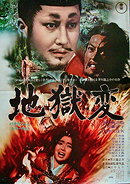
 80
80
 8.5
8.5
 7.3
7.3
